
TEACH STEM EDUCATION BY EXAMPLE
Do you have young children that look up to you every single day when they wake up? Are you a teacher, coach, doctor, or business owner that could literally see more than 100 different people every single day? It doesn’t matter whether you are the secretary behind the computer making calls and taking client information or the scientist currently making groundbreaking discoveries in medical research. You can teach those around you, and even yourself, how to love and appreciate STEM education even if you do not have a career that is directly related to STEM.
“Lead from Any Chair”
Benjamin Zander and his wife, Rosamund Stone Zander, once wrote a book entitled “The Art of Possibility”. Benjamin is the well-known respected musician and conductor of the Boston Philharmonic Orchestra and Rosamund is a successful and well-loved family therapist. With their combined thoughts and ideas, the pair were able to write a book on the variation of interpretations and what they can teach us about how we approach the events in life. While there are wildly different interpretations and opinions of the text itself, it is clear that the underlying ideas and concepts are all about inspiring oneself and those around them to look beyond what comes to mind naturally.
So, what does this have to do with STEM or leading by example? The Zander duo teaches to embrace differences in perspective, explore all the possibilities to the situation at hand, and to truly lead from any position that you are currently in. You do not have to be a world-renowned scientist, a wizard mathematician, a top biomedical engineer, or the inventor of the next biggest piece of technology to make a difference in the world you live in. You do not have to have a career in the STEM field to teach those around you to appreciate STEM initiatives or to find interest in those fields.
Talk the Talk and Walk the Walk
Apart from being a parent or a teacher where your entire day, and often lifetime, is dedicated to helping young minds shape their future, thoughts, and actions, that you may not understand how your talk or actions actually make an impression on other people. Take a minute to think about the butterfly effect.
Have you ever heard of the butterfly effect? The butterfly effect is a concept that states that small actions have big consequences. It was coined by a man named Edward Lorenz to describe how a tornado had been started weeks earlier by the flapping of a butterfly’s wings. The idea here is that the butterfly’s flapping was a seemingly insignificant change from the normal conditions that turned out to have catastrophic consequences later on. You could cause a butterfly effect with your actions in either a positive or negative way. If you, all of the sudden on a random Tuesday, decided that you were going to start talking about the new medical advancements that you heard about on the television and how neat they are, then you could inspire a young, lost, and uninspired teenager to think about how they could make the technology even more efficient or how they could have their name on television for a new medical device that they created. If you worked in a gas station and talked to random customers like this, you could find the familiar face on television talking about their new medical technology in the next decade or two and truly making a difference for the entire world to benefit from. Your actions may not make this significant of an impact on society, but you never truly know if you are not making the effort to “walk the walk” and “talk the talk”.
Take the Time to Read Up on What You Are Teaching
Taking the time to read up on STEM and what you are trying to teach can go hand-in-hand with “talking the talk” and “walking the walk”. If you are truly inspired to learn about STEM and to teach its initiatives to others, then it may be worthy of picking up a few texts from the library that outline STEM and famous contributors to the effort. You can read everything from the origin of STEM to the implications associated with teaching STEM education in schools. You are sure to find a thousand or more texts that directly relate to the concepts you are trying to learn and teach. It is imperative that you are up-to-date on the information that you are trying to share as incorrect information can be both confusing and uninspiring.
Here are a few texts that you may wish to consider reading:
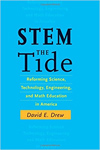 STEM The Tide: Reforming Science, Technology, Engineering, And Math Education In America by David E. Drew
STEM The Tide: Reforming Science, Technology, Engineering, And Math Education In America by David E. Drew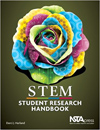 STEM Student Research Handbook by Darci J. Harland
STEM Student Research Handbook by Darci J. Harland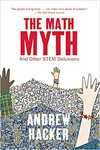 The Math Myth: And Other STEM Delusions by Andrew Hacker
The Math Myth: And Other STEM Delusions by Andrew Hacker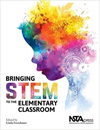 Bringing STEM To The Elementary Classroom by Linda Froschauer
Bringing STEM To The Elementary Classroom by Linda Froschauer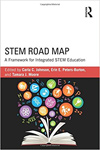 STEM Road Map: A Framework for Integrated STEM Education by Carla C. Johnson, Erin E. Peters-Burton, and Tamara J. Moore
STEM Road Map: A Framework for Integrated STEM Education by Carla C. Johnson, Erin E. Peters-Burton, and Tamara J. Moore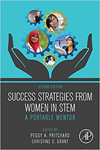 Success Strategies From Women in STEM: A Portable Mentor by Peggy A. Pritchard and Christine Grant
Success Strategies From Women in STEM: A Portable Mentor by Peggy A. Pritchard and Christine Grant The Case for Stem Education: Challenges and Opportunities by Rodger W. Bybee
The Case for Stem Education: Challenges and Opportunities by Rodger W. Bybee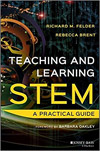 Teaching and Learning STEM: A Practical Guide by Richard M. Felder and Rebecca Brent
Teaching and Learning STEM: A Practical Guide by Richard M. Felder and Rebecca Brent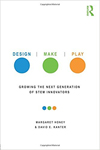 Design, Make, Play: Growing the Next Generation of STEM Innovators by Margaret Honey and David E. Kanter
Design, Make, Play: Growing the Next Generation of STEM Innovators by Margaret Honey and David E. Kanter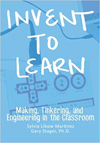 Invent to Learn: Making, Tinkering, and Engineering in the Classroom by Sylvia Libow Martinez and Gary Stager
Invent to Learn: Making, Tinkering, and Engineering in the Classroom by Sylvia Libow Martinez and Gary StagerThe above images (10) are courtesy of Amazon Associates Program
You can take the information that you learn and become a core teacher at a K-12 school, receive even more schooling and teaching college students STEM initiatives, or you can simply move on to teaching your own loved ones what you learn in the hopes that somewhere along the line something that you say truly sticks with them.
Teaching by example is one of the best ways that you, in any position or career possible, can teach those around you to love and find interest in STEM. It may take a little bit of reading, a lot of extra work, or a giant helping of confidence, but you can truly make a difference to someone in your life. With the information provided above, we hope that you are able to see your impact on those around you and work to improve the world that you live, work, and enjoy living in.
You do not have to feel limited by the books that have been listed or the tips that have been outlined above. These documents and words of advice were strictly to get you thinking about your interactions in the world and how they can impact those around you. If you have always been the type of person that likes to read about things and has quite a bit of knowledge about STEM education, please continue to do your research and teach anyone that is willing to listen all that you know and why it is important.